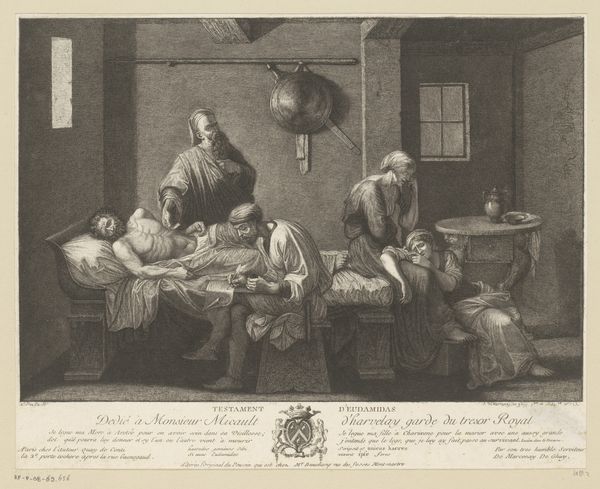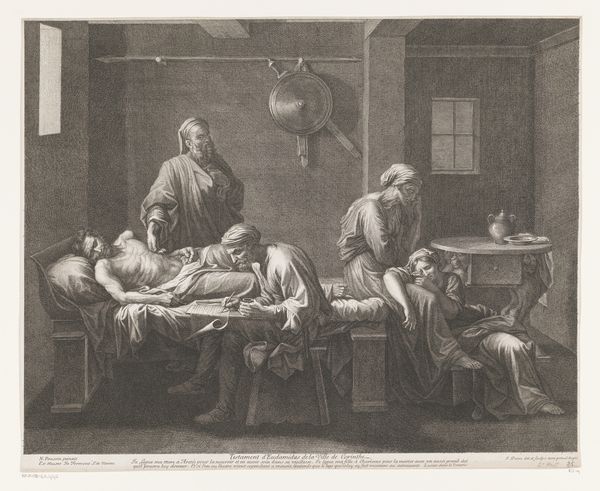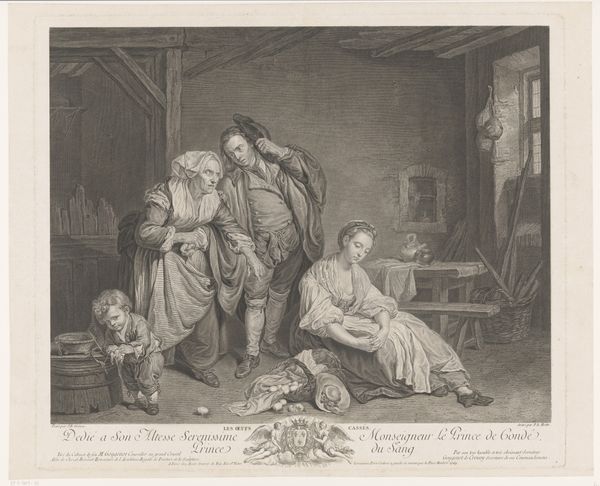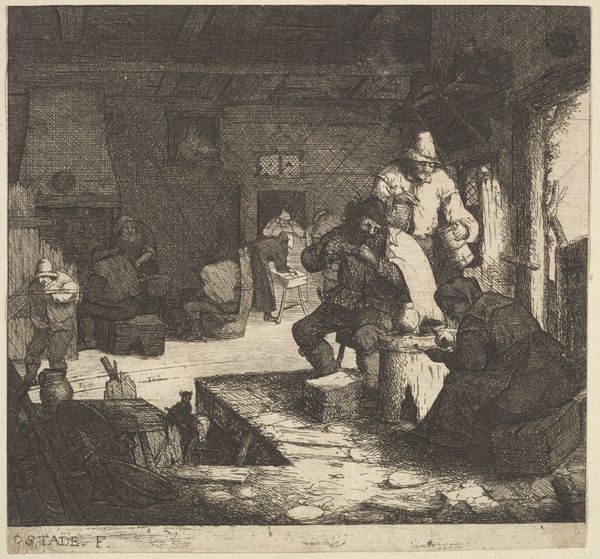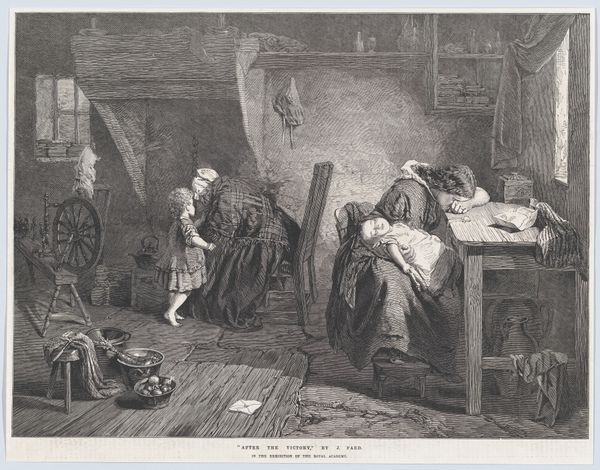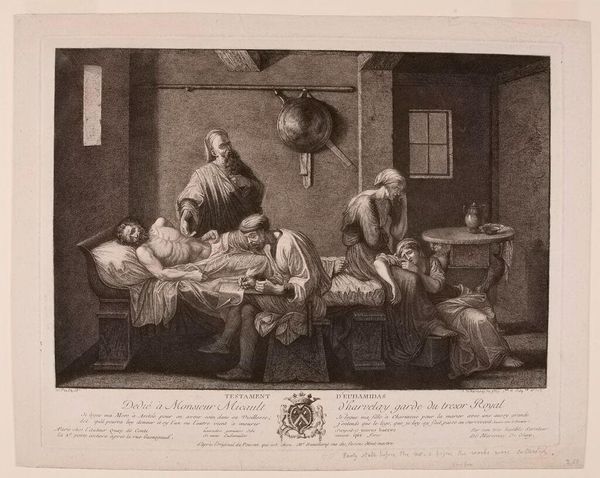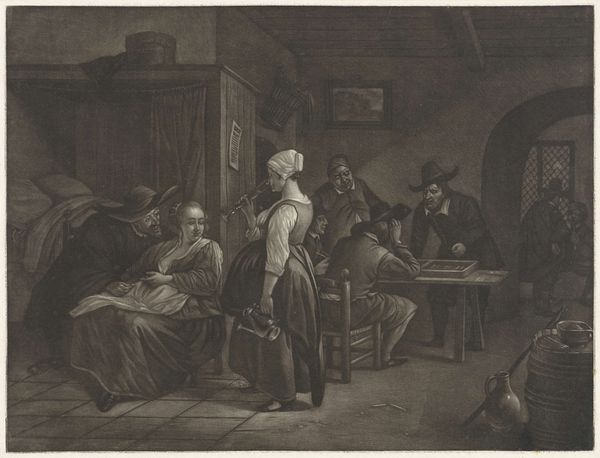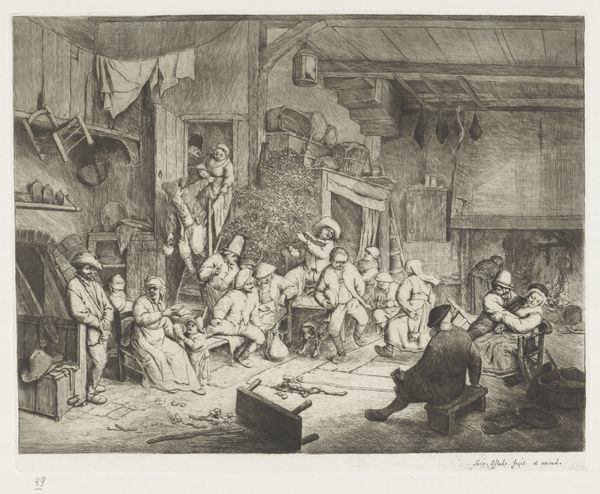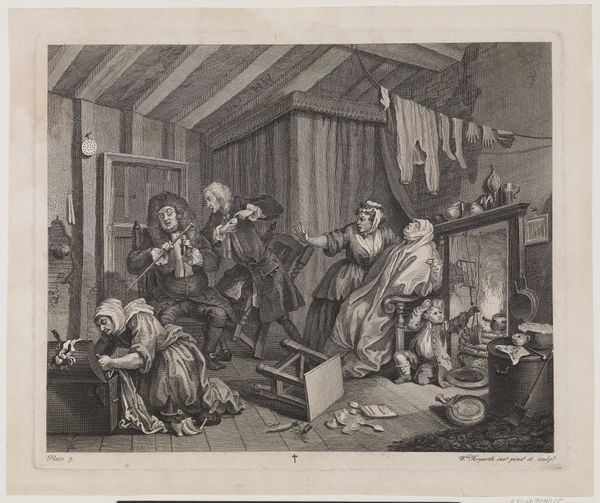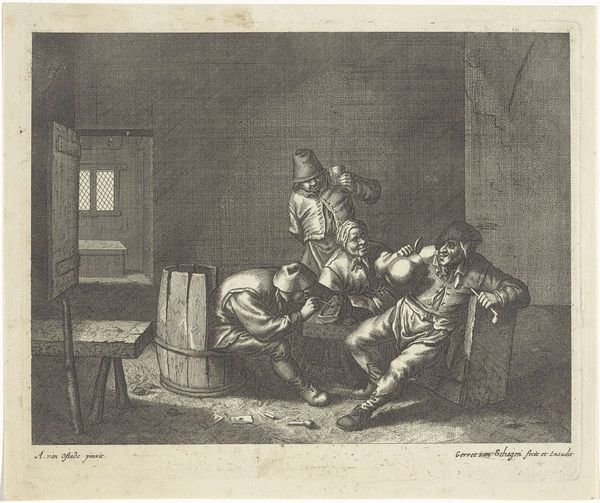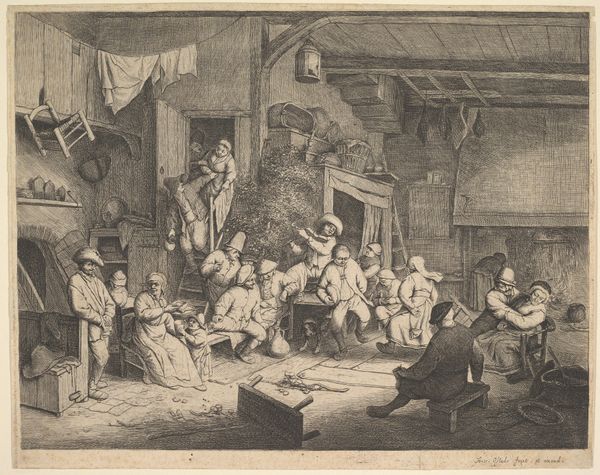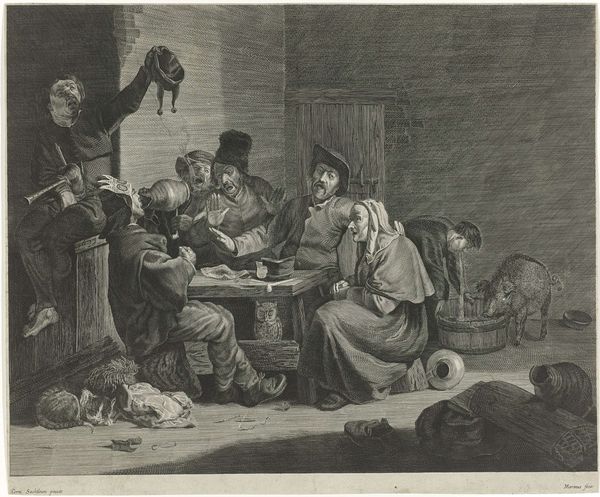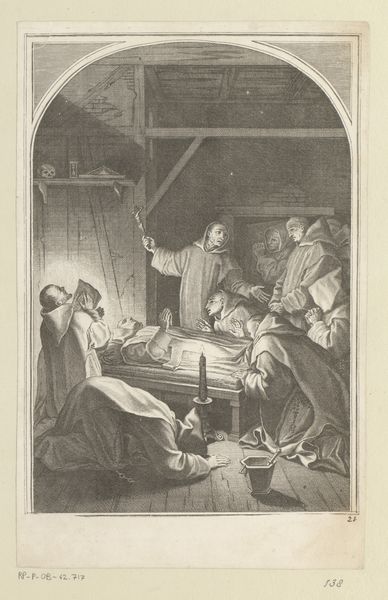
print, engraving
#
neoclacissism
#
narrative-art
# print
#
old engraving style
#
figuration
#
19th century
#
history-painting
#
engraving
Dimensions: height 251 mm, width 322 mm
Copyright: Rijks Museum: Open Domain
Curator: This is "Testament van Eudamidas," an engraving attributed to Antoine de Marcenay de Ghuy, likely created sometime between 1734 and 1811. Editor: It’s striking. A stark, melancholic scene. The composition, with the figures huddled in the dimly lit room, evokes a sense of intimacy and quiet sorrow. Curator: Absolutely. We see a dying man dictating his will, or testament, surrounded by figures overcome by grief. What’s particularly fascinating is the emphasis on line and shadow in the engraving process itself. The very act of etching creates this somber mood, don’t you think? Look closely at the lines indicating the drapery of the figures. Editor: Yes, and the symbolism inherent in this specific subject matter. Deathbed scenes have a rich visual history. Here, Eudamidas, the central figure, echoes classical images of stoicism and self-sacrifice. That’s a really prominent oil lamp hanging on the back wall of the room, suggesting he might have died in the middle of the night. It suggests a legacy or truth being passed down even at life’s final moments. Curator: And consider the materiality of the engraving itself. It would have been reproduced and distributed widely. So what appears as a highly individual and personal moment—a man’s last will—becomes a commodity, a printed image available for consumption by the masses. We have an emotional narrative made tangible through accessible material. Editor: And one designed for thoughtful interpretation, wouldn’t you agree? Observe the woman supporting another. Note the expressions on the faces; the grief and stoic resignation of the central characters are universal emotions represented by very precise choices of how to picture mourning through gesture and posture. They reflect contemporary social attitudes toward bereavement. Curator: So the narrative is both intimate and accessible, mediated through the specific labor of creating and disseminating this image, via these 18th century printmaking technologies. Editor: Exactly. The symbolic power resonates, due to its accessible distribution facilitated by a specific artistic choice. Both elements give us ways to consider its continuing influence. Curator: It’s truly a work where materials and meaning, intersect so eloquently to engage our thinking on this neoclassical representation of passing on. Editor: Indeed, the image continues to evoke empathy and introspection from us even today through the enduring vocabulary of grief depicted and disseminated with the technologies available in its era.
Comments
No comments
Be the first to comment and join the conversation on the ultimate creative platform.
